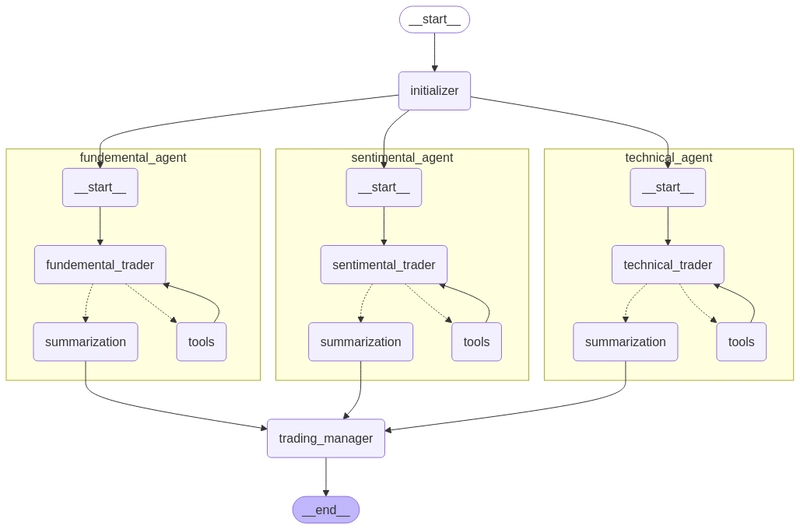virt-compose
Introduction I really like containers but sometimes a virtual machine is necessary for certain jobs. For example when I need to test my arch installation script I need to use a virtual machine to see if the installation process completes successfully. But, I find virtual machines harder to maintain than containers due to their primarily imperative tools. I like qemu for its wide range support, but I don't like its defaults and flags for achieving greater performances. I like libvirt for its abstraction over virtualization solutions, but I find its cli, virsh, hard to use. Also, when deploying complex scenarios, these tools become harder to use due to their targeting single machines. I want a solution that helps you from building images to running them in a declarative way from the cli. Inspiration quickemu: It doesn't support automated installations Idea Create a docker-compose like command-line application that allows to easily build and deploy virtual machines on libvirt. Implementation Format For the compose file which defines the sets of virtual machines, I have decided to use a format similar to a docker-compose.yml: machines: nixos: image: nixos memory: 4096 os-variant: nixos boot: firmware: efi loader_secure: false images: nixos: packerfile: ./nixos.yml output: ./build/nixos Building an image For building, I have decided to use packer since it has a lot of examples available online for building common images. However, I don't like the hcl file format due to the limited amount of tooling available for it, so I have decided to use the json configuration syntax. Since I like yaml more than json and since packer doesn't support it natively, the program firstly converts the yaml to a temporary json and then executes packer. Example: packer: required_plugins: qemu: version: ">=1.1.0" source: "github.com/hashicorp/qemu" source: qemu: nixos: disk_size: "60G" memory: 8192 format: "qcow2" accelerator: "kvm" ssh_timeout: "2m" vm_name: "nixos" net_device: "virtio-net" disk_interface: "virtio" efi_boot: false communicator: "ssh" boot_key_interval: "10ms" boot_keygroup_interval: "10ms" build: - name: step1 source: "source.qemu.nixos": iso_url: "https://releases.nixos.org/nixos/24.11/nixos-24.11.715908.7105ae395770/nixos-minimal-24.11.715908.7105ae395770-x86_64-linux.iso" iso_checksum: "sha256:659a056261404810703188b986b818a723fd0bcf650e58c1ea9857086612822a" output_directory: "build" ssh_username: "nixos" boot_wait: "1s" shutdown_command: "sudo poweroff" boot_command: - "mkdir .sshecho '{{ .SSHPublicKey }}' > .ssh/authorized_keys" provisioner: - file: source: nix destination: /tmp/nix - shell: inline: - ssh-keygen -b 2048 -t rsa -f ~/.ssh/id_rsa -q -N "" - cat ~/.ssh/id_rsa.pub >> ~/.ssh/authorized_keys - cd /tmp/nix && nix --extra-experimental-features 'nix-command flakes' run nixpkgs#nixos-anywhere -- --flake .#nix --generate-hardware-config nixos-generate-config ./hardware-configuration.nix --target-host 127.0.0.1 --phases kexec,disko,install Source code I have published a prototype for this on GitHub It is possible to run it using nix with: nix -- run github:rikyiso01/virt-compose up Conclusions I like having a set of files for easily setting up and running virtual machines, I am using this prototype since some months and I find it very useful for testing local setups and home servers. I will continue in the future to use it and fix bugs until I find a use case which isn't easily covered by this approach.

Introduction
I really like containers but sometimes a virtual machine is necessary for certain jobs.
For example when I need to test my arch installation script I need to use a virtual machine to see if the installation process completes successfully.
But, I find virtual machines harder to maintain than containers due to their primarily imperative tools.
I like qemu for its wide range support, but I don't like its defaults and flags for achieving greater performances.
I like libvirt for its abstraction over virtualization solutions, but I find its cli, virsh, hard to use.
Also, when deploying complex scenarios, these tools become harder to use due to their targeting single machines.
I want a solution that helps you from building images to running them in a declarative way from the cli.
Inspiration
- quickemu: It doesn't support automated installations
Idea
Create a docker-compose like command-line application that allows to easily build and deploy virtual machines on libvirt.
Implementation
Format
For the compose file which defines the sets of virtual machines, I have decided to use a format similar to a docker-compose.yml:
machines:
nixos:
image: nixos
memory: 4096
os-variant: nixos
boot:
firmware: efi
loader_secure: false
images:
nixos:
packerfile: ./nixos.yml
output: ./build/nixos
Building an image
For building, I have decided to use packer since it has a lot of examples available online for building common images.
However, I don't like the hcl file format due to the limited amount of tooling available for it, so I have decided to use the json configuration syntax.
Since I like yaml more than json and since packer doesn't support it natively, the program firstly converts the yaml to a temporary json and then executes packer.
Example:
packer:
required_plugins:
qemu:
version: ">=1.1.0"
source: "github.com/hashicorp/qemu"
source:
qemu:
nixos:
disk_size: "60G"
memory: 8192
format: "qcow2"
accelerator: "kvm"
ssh_timeout: "2m"
vm_name: "nixos"
net_device: "virtio-net"
disk_interface: "virtio"
efi_boot: false
communicator: "ssh"
boot_key_interval: "10ms"
boot_keygroup_interval: "10ms"
build:
- name: step1
source:
"source.qemu.nixos":
iso_url: "https://releases.nixos.org/nixos/24.11/nixos-24.11.715908.7105ae395770/nixos-minimal-24.11.715908.7105ae395770-x86_64-linux.iso"
iso_checksum: "sha256:659a056261404810703188b986b818a723fd0bcf650e58c1ea9857086612822a"
output_directory: "build"
ssh_username: "nixos"
boot_wait: "1s"
shutdown_command: "sudo poweroff"
boot_command:
- "mkdir echo '{{ .SSHPublicKey }}' > .ssh/authorized_keys"
provisioner:
- file:
source: nix
destination: /tmp/nix
- shell:
inline:
- ssh-keygen -b 2048 -t rsa -f ~/.ssh/id_rsa -q -N ""
- cat ~/.ssh/id_rsa.pub >> ~/.ssh/authorized_keys
- cd /tmp/nix && nix --extra-experimental-features 'nix-command flakes' run nixpkgs#nixos-anywhere -- --flake .#nix --generate-hardware-config nixos-generate-config ./hardware-configuration.nix --target-host 127.0.0.1 --phases kexec,disko,install
Source code
I have published a prototype for this on GitHub
It is possible to run it using nix with:
nix -- run github:rikyiso01/virt-compose up
Conclusions
I like having a set of files for easily setting up and running virtual machines, I am using this prototype since some months and I find it very useful for testing local setups and home servers.
I will continue in the future to use it and fix bugs until I find a use case which isn't easily covered by this approach.









































































































































































![[The AI Show Episode 144]: ChatGPT’s New Memory, Shopify CEO’s Leaked “AI First” Memo, Google Cloud Next Releases, o3 and o4-mini Coming Soon & Llama 4’s Rocky Launch](https://www.marketingaiinstitute.com/hubfs/ep%20144%20cover.png)





























































































































![[DEALS] The All-in-One Microsoft Office Pro 2019 for Windows: Lifetime License + Windows 11 Pro Bundle (89% off) & Other Deals Up To 98% Off](https://www.javacodegeeks.com/wp-content/uploads/2012/12/jcg-logo.jpg)



























![Is this too much for a modular monolith system? [closed]](https://i.sstatic.net/pYL1nsfg.png)






















































































































_Andreas_Prott_Alamy.jpg?width=1280&auto=webp&quality=80&disable=upscale#)






























































































![What features do you get with Gemini Advanced? [April 2025]](https://i0.wp.com/9to5google.com/wp-content/uploads/sites/4/2024/02/gemini-advanced-cover.jpg?resize=1200%2C628&quality=82&strip=all&ssl=1)












![Apple Shares Official Trailer for 'Long Way Home' Starring Ewan McGregor and Charley Boorman [Video]](https://www.iclarified.com/images/news/97069/97069/97069-640.jpg)
![Apple Watch Series 10 Back On Sale for $299! [Lowest Price Ever]](https://www.iclarified.com/images/news/96657/96657/96657-640.jpg)
![EU Postpones Apple App Store Fines Amid Tariff Negotiations [Report]](https://www.iclarified.com/images/news/97068/97068/97068-640.jpg)
![Apple Slips to Fifth in China's Smartphone Market with 9% Decline [Report]](https://www.iclarified.com/images/news/97065/97065/97065-640.jpg)


































































































































